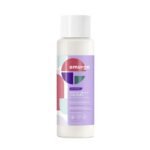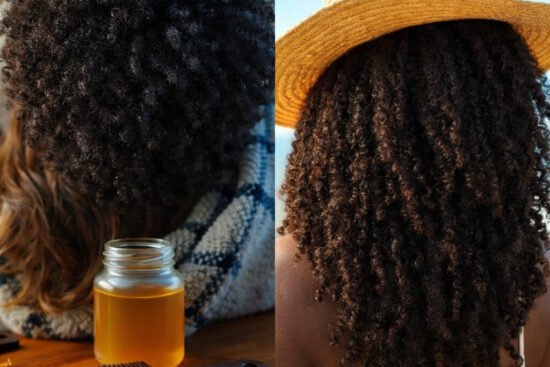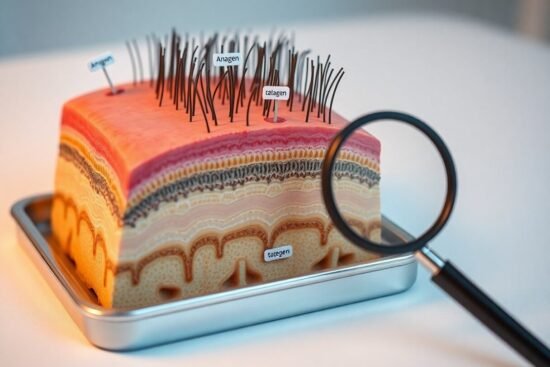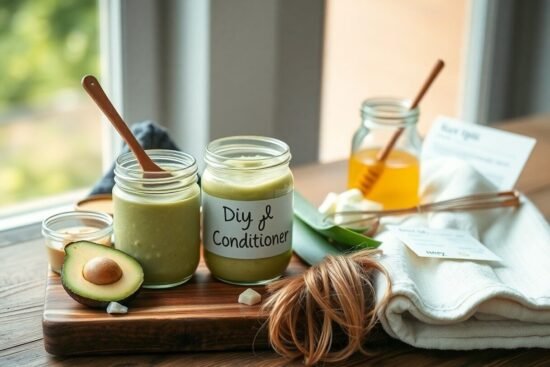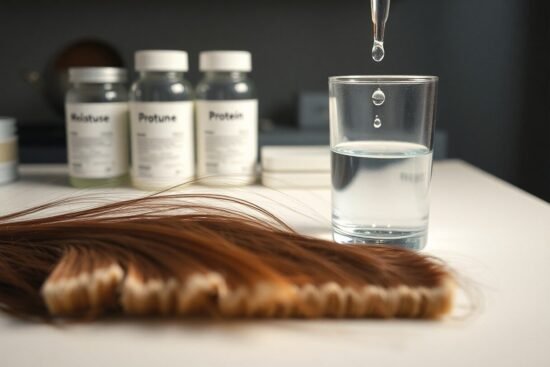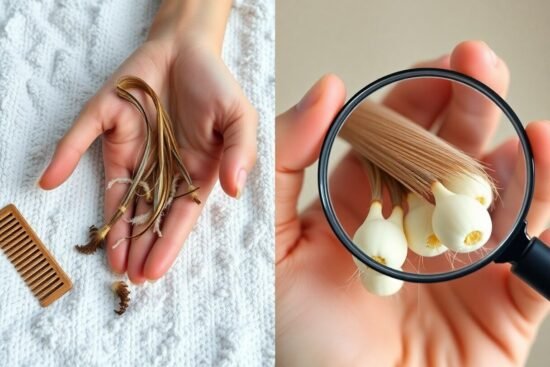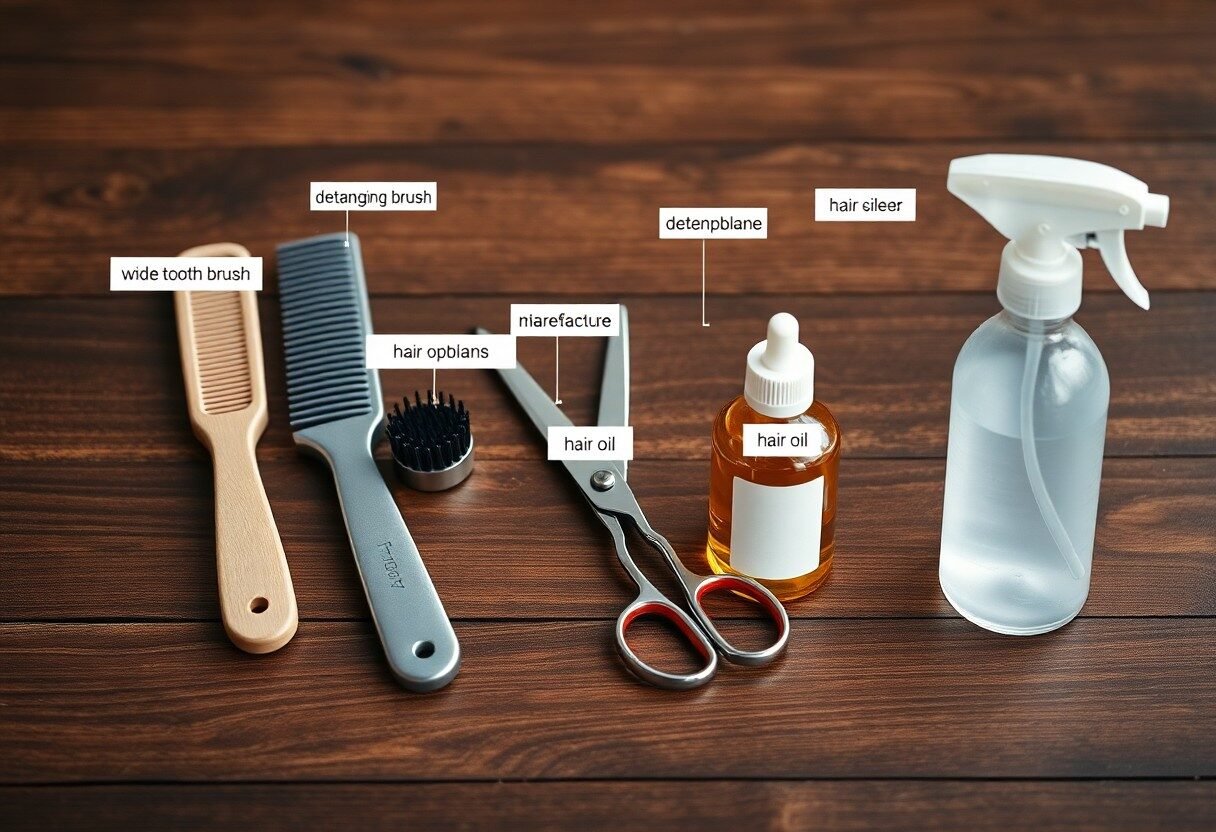
With proper detangling techniques, you can significantly reduce hair breakage and maintain your hair’s health. In this post, I’ll explore various tools and methods that I’ve found effective in minimizing damage while detangling. Whether you have curly, straight, or wavy hair, using the right tools like wide-tooth combs and detangling sprays can make a world of difference. Additionally, I will share some tips on techniques to apply that will help you handle your hair gently, ensuring each strand remains strong and vibrant.
Key Takeaways:
- Begin detangling from the ends of the hair and gradually work your way up to minimize breakage.
- Utilize wide-tooth combs and detangling brushes specifically designed to reduce snags and tears.
- Always use a leave-in conditioner or a detangling spray to provide slip and hydration, making the process smoother.
- Detangle hair when it is damp, as wet hair is generally more pliable and easier to comb through.
- Section hair into manageable parts to ensure thorough and systematic detangling, particularly for thick or curly hair.
- Use your fingers to gently work through knots before using tools, allowing for a more delicate approach to tangles.
- Incorporate regular trims into your hair care routine to reduce split ends and tangling issues over time.
Secrets of Effective Detangling
Successfully navigating the detangling process hinges on understanding your hair’s unique characteristics and employing effective techniques. It’s not merely about removing knots; it’s about preserving your hair’s health and luster. Patience is key—rushing can lead to unnecessary breakage. The right combination of tools and methods can make a remarkable difference, turning what might be a tedious task into a more manageable routine.
The Role of Hair Texture in Detangling Strategies
Your hair texture significantly impacts your detangling strategies. For instance, fine hair may tangle easily, necessitating a gentle approach, while thick or curly hair often requires more robust tools to cope with knots. Tailoring your detangling process to suit your specific hair type is crucial for maintaining hair integrity during the process.
Choosing the Right Tools for Different Hair Types
Selecting the appropriate tools can make or break your detangling experience. A wide-tooth comb is ideal for fine hair while a sturdy detangling brush works wonders for thick or curly locks. I often recommend exploring various options until you find what perfectly complements your hair’s needs. This personalized approach prevents damage and facilitates smoother detangling.
| Hair Type | Recommended Tool |
| Fine Hair | Wide-Tooth Comb |
| Thick Hair | Sturdy Detangling Brush |
| Curly Hair | Flexi-Detangler Brush |
| Wavy Hair | Boar Bristle Brush |
- Optimal tools matched to your hair type lack universal standardization.
- Widely recommended products may not always fit your texture preferences.
- Frequent tool adjustments can enhance overall hair health.
- Detangling creams can protect against breakage during the process.
- Recognizing your hair’s specific needs will lead to better detangling practices.
Choosing the right tools is crucial for effective detangling. Fine hair often benefits from a gentle approach, utilizing tools like a wide-tooth comb or specially designed brushes to minimize tension. Meanwhile, thicker and curlier hair textures may need more robust equipment to tackle tangles without causing damage. I emphasize experimenting with various tools, such as a flexi-detangler or a boar bristle brush, until you find a customized regimen that effectively meets your hair’s specific challenges. It can transform the detangling experience from a frustrating chore into a nurturing ritual.
| Tool Type | Features |
| Wide-Tooth Comb | Minimizes breakage, ideal for wet or damp hair. |
| Detangling Brush | Flexible bristles glide smoothly through knots. |
| Flexi-Detangler | Designed for curly hair; bends to reduce stress on strands. |
| Boar Bristle Brush | Distributes natural oils for shine and reduced frizz. |
- Utilize specialized brushes for different textures and conditions.
- Prioritize quality tools over generic options for better results.
- Regularly adapt your toolkit to reflect changes in your hair.
- Incorporate oils to assist with glide during detangling.
- Recognizing which tools suit your hair type will enhance health and appearance.
Tools for Tangle-Free Locks
Choosing the right tools for detangling can make all the difference in your hair care routine. From brushes to combs, each tool has its own unique benefits, catering to different hair types and textures. Investing in high-quality tools not only makes detangling easier but also contributes to healthier hair by minimizing breakage and split ends. A well-designed tool can glide through tangles with less resistance, saving you time and energy while enhancing your overall hair health.
Brushes vs. Combs: Which One Reigns Supreme?
Both brushes and combs offer unique advantages, depending on your hair type. Brushes are often preferred for their ability to cover larger sections quickly and distribute natural oils, promoting shine. On the other hand, combs are perfect for precision work, detangling wet hair, and tackling specific areas. Experimenting with both can help you determine what texture benefits from which tool more effectively, ensuring you make the best choice for your unique hair needs.
The Benefits of Detangling Sprays and Conditioners
Incorporating detangling sprays and conditioners into your routine can significantly ease the detangling process. These products provide slip, allowing tools to glide smoothly through your hair while also moisturizing and nourishing strands. I personally find that the right detangling spray can be a game-changer, as it decreases the risk of breakage and promotes healthier hair overall. Additionally, many sprays serve dual purposes, offering UV protection and heat defense, which are invaluable for maintaining hair integrity.
Detangling sprays and conditioners are formulated with ingredients that coat the hair, reducing friction during the detangling process. For instance, products containing silicones provide a protective layer that helps to prevent damage while brushing. You might also find natural ingredients like aloe vera or coconut oil, which hydrate and strengthen hair. Using these sprays not only makes it easier to part through snags but also leaves your hair looking smoother and more manageable. By integrating these versatile products into your regimen, you can enjoy a stress-free detangling experience while promoting long-term hair health.

Techniques to Minimize Damage
Employing the right techniques during detangling can drastically reduce the risk of breakage. Gentle approaches, combined with the proper tools, work synergistically to maintain hair health and integrity. I often find that taking my time and being mindful of each step ultimately leads to smoother, stronger strands in the long run.
The Moisture Retention Method: Keeping Hair Hydrated
Hydrating your hair prior to detangling is a game-changer. I always make it a point to spritz my locks with a leave-in conditioner or light water spray, ensuring that my hair is sufficiently moist. This not only eases the detangling process but also helps reduce friction, leading to minimal breakage.
The Art of Sectioning: A Step-by-Step Guide
Sectioning your hair can significantly streamline your detangling routine. By dividing your hair into manageable parts, you can focus on one area at a time, making the process more efficient and reducing the chances of tangles becoming overwhelming. This technique not only makes it easier to work through knots but also allows for a more thorough application of products.
| Step | Description |
|---|---|
| 1 | Start with clean, damp hair for easy manipulation. |
| 2 | Divide your hair into four sections, securing each with a clip. |
| 3 | Begin detangling one section at a time, working from the ends to the roots. |
| 4 | Re-clip the section upon completion to keep your work organized. |
Utilizing the sectioning method enhances your detangling experience and empowers you to tackle each knot with confidence. As you work through each section, you’ll notice that not only is your hair less likely to break, but the process also becomes remarkably more manageable. I find that moving methodically through defined sections allows me to fully concentrate on each area, facilitating thorough detangling and product distribution without the chaos of working through all my hair at once.
| Sectioning Benefits | Impact on Detangling |
|---|---|
| Reduces Overwhelm | Makes the process feel less daunting. |
| Improves Product Application | Ensures each section is moisturized effectively. |
| Increases Focus | Allows for careful attention to each knot. |
| Enables Better Control | Prevents tangles from becoming unmanageable. |
The Science of Hair Breakage
Understanding hair breakage is necessary for cultivating healthy locks. Hair is composed of a protein called keratin, which, when subjected to excessive heat, chemical treatments, or mechanical stress, can weaken and lead to breakage. I’ve noticed that different hair types can exhibit varying degrees of resilience, so knowing how your hair reacts to these factors is critical. The goal is to minimize damage by using suitable techniques and products that maintain the integrity of each strand.
Understanding Hair Anatomy for Better Care
Familiarizing yourself with hair anatomy can dramatically improve your care routine. Each strand consists of three layers: the cuticle, cortex, and medulla. The cuticle, the outermost layer, provides protection, while the cortex contributes to strength and color. I find that recognizing the role each part plays helps me tailor my hair care methods effectively, ensuring I’m not just treating the symptoms, but also nurturing the roots.
Identifying Weak Points and How to Strengthen Them
Weak points in hair can lead to breakage, and identifying these ensures effective care. Areas prone to damage usually include the ends and spots regularly exposed to heat styling or harsh chemicals. Observing your hair’s texture and flexibility can provide insights into its overall health. I’ve learned that nourishing treatments, trimming split ends, and choosing protective styles help reinforce weaker areas, creating a strong foundation for vibrant hair.
To enhance weak points, I recommend incorporating protein-rich treatments that can fortify hair strands. Hydration is equally important; deep conditioning masks infused with necessary oils can restore moisture balance, reducing brittleness. Regular trims of about 1/4 inch every six to eight weeks can prevent further splitting. Additionally, diversifying your hair routine with gentle products designed for your specific hair type adds a layer of protection. By understanding your unique damage patterns, you can make informed decisions that significantly decrease the risk of breakage.
Expert Tips and Tricks from Hair Professionals
- Always detangle your hair when wet to minimize breakage.
- Use a wide-tooth comb for the best results.
- Incorporate a leave-in conditioner for extra slip.
- Section your hair to make the process efficient and manageable.
- Never yank or pull too hard; be gentle to avoid further damage.
This insight from hair professionals provides actionable strategies to create stronger, healthier strands.
Personal Insights from Hair Stylists on Detangling
I’ve found that using a dual-action detangling spray can significantly enhance the process of unclogging those knots. Most stylists I know swear by the technique of working from the ends of your hair upward, allowing you to tackle tangles systematically without causing undue stress to your hair. Additionally, many recommend a soft-bristle brush as it glides through the hair, reducing friction and potential breakage.
Common Mistakes to Avoid for Long-Term Health
Many individuals unknowingly make errors in their detangling routines that can be detrimental to their hair’s health. Using the wrong tools, detangling dry hair, and rushing through the process are common missteps. These mistakes lead to breakage and ultimately hinder growth and strength. Taking your time, investing in the correct tools, and applying sufficient product will enhance the overall condition of your hair.
A prevalent mistake is using the wrong detangling tool, which can cause further damage. For instance, fine-toothed combs can pull and break delicate strands, while the wrong type of brush might exacerbate tangles. Working on dry hair without a detangling product can create friction, ultimately causing breakage. Skipping the time to section your hair leads to missing tangles, contributing to long-term health issues. A deliberate approach, step by step, proves important for maintaining strong and resilient hair.
To wrap up
Summing up, I’ve shared various detangling techniques, tools, and methods that can help you minimize breakage while managing your hair. By choosing the right tools, like wide-tooth combs or detangling brushes, and incorporating effective techniques, you can maintain your hair’s health and beauty. It’s all about finding what works best for you and your hair type. With these strategies in your toolkit, I’m confident you’ll see improved results in your detangling routine.
FAQ
Q: What are the best tools for detangling hair?
A: The best tools for detangling hair include wide-tooth combs, detangling brushes, and specialized detangling tools designed with flexible bristles. Each tool helps minimize breakage and should be selected based on your hair type for optimal results.
Q: How can I safely detangle wet hair?
A: To safely detangle wet hair, start by applying a moisturizing conditioner or a leave-in detangler to provide slip. Use a wide-tooth comb, starting from the ends and working your way up to the roots. Take your time and be gentle to prevent breakage.
Q: What techniques can I use to minimize breakage while detangling?
A: To minimize breakage while detangling, use the sectioning technique by dividing hair into manageable parts and detangling each section individually. Also, ensure you always start detangling from the ends and work your way upwards, and use a product that adds slip.
Q: Is it better to detangle dry or wet hair?
A: The best option for detangling depends on your hair type. Generally, damp hair is more fragile, so if your hair is prone to breakage, it’s recommended to detangle it dry with a suitable product. For curly hair types, damp hair with conditioner provides additional slip, making it easier to detangle without damage.
Q: What are some natural methods for detangling hair?
A: Natural methods for detangling hair include using oils like coconut or olive oil combined with water to create a slip solution. Aloe vera gel is another great option to apply before detangling, as it helps provide moisture and reduces friction between strands.
Q: Can using heat tools affect detangling?
A: Yes, using heat tools can affect detangling, as heat can alter the hair’s structure and make it more prone to damage. If you choose to use heat, ensure your hair is well-moisturized and protected with a heat protectant product, and avoid excessive tension while detangling.
Q: How often should I detangle my hair to prevent breakage?
A: The frequency of detangling depends on your hair type and texture. Generally, it’s beneficial to detangle every few days or after each wash for coily or curly hair to prevent knots and breakage. For straight or wavy hair, once a week may suffice, but always assess your hair’s needs and detangle accordingly.

